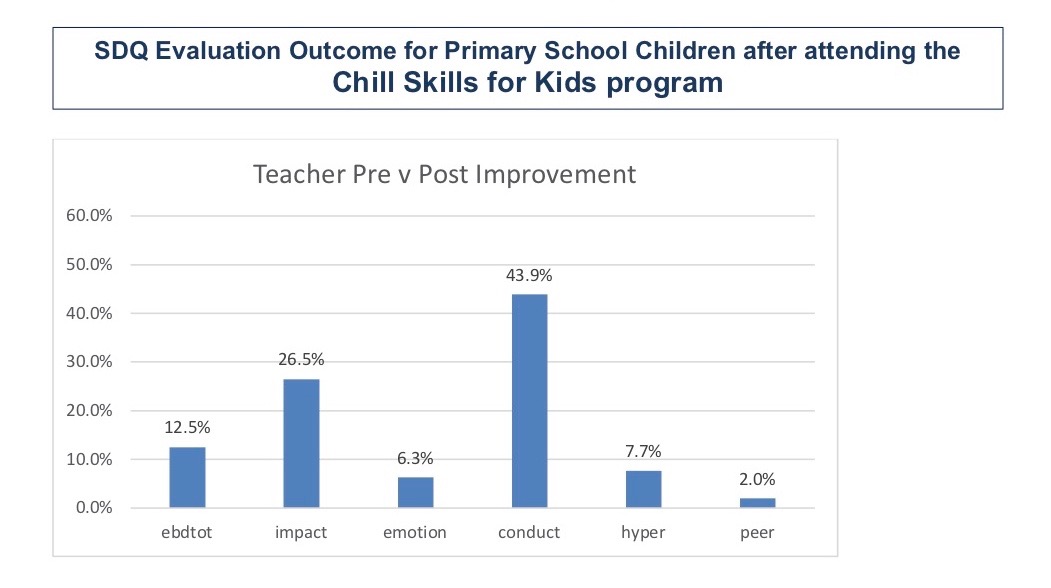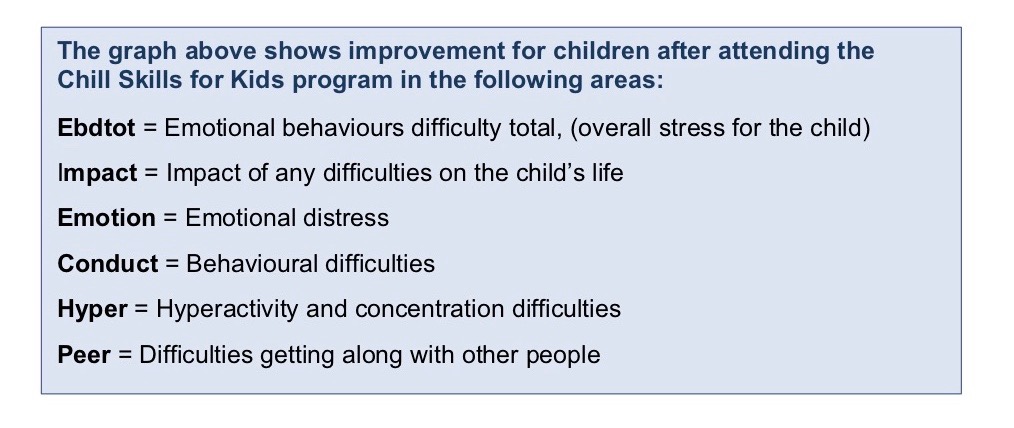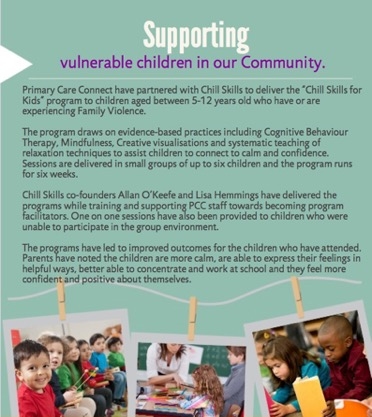Extract from report, evaluating the process and outcomes of the delivery of Chill Skills at a Primary School, during term 4, 2020.
Context:
Chill Skills was the chosen group program to deliver to the year 5-6 students as there had been a large number of student counselling referrals related to anxiety and social/ peer related difficulties. The Chills Skills program uses mindfulness- cognitive based strategies, which incorporates multiple skill building techniques that are developmentally appropriate and adaptable for the targeted cohort of students.
As 2020 was a year of high stress, due to the changes and adaptations in response to the COVID -19 Pandemic, many children experienced higher levels of anxiety due to the unknown of what life changes were occurring. Schools had experienced two remote learning periods; this resulted in students being at risk of disconnection from their peers and the safety that school can often provide.
Chill Skills also provided the flexibility to be facilitated within a school as it is designed to be a 6 week program. Further to this, Chill Skills allows flexibility of delivery based on the age and needs of the group.
Student cohort:
Chill Skills was delivered in four groups, each with five students. Groups were based on year level and gender- females grade 5, females grade 6, boys grade 5 and boys grade 6. Age and grade based groups selected due to developmental stage and potential for possible disruptive behaviour. As such, it was determined students may be more contained and feel safe with their peers.
Process of selection:
Student counsellor emailed all year classroom teachers information about Chill Skills and requested names put forward for who they felt would benefit from the program. Criteria for program was students with many worries or symptoms related to anxiety; student who have experienced emotional difficulties throughout the year; students who would be responsive to mindfulness strategies; and or students who required additional support with their emotional responses. Student counsellor then met with the leading teacher of student wellbeing to select best matching of the groups. Once students selected, classroom teachers contacted students’ parents to provide them information on Chill Skills, and if they wanted their child to participate, parents provided a letter of consent for the program.
The Chill Skills program had a total of 20 students commence, with 17 completing the program.
Outcomes of Program
As Chill Skills is working towards being an evidence based program, the developers had employed the Strength and Difficulties questionnaire (SDQ) to gather evidence of participant outcomes. The SDQ can be used for various purposes, including clinical assessment, evaluation of outcomes, research and screening. Chill skills is using it for the purpose of evaluation of outcomes and research into its efficiency.
The SDQ is a brief behavioural screening questionnaire for 3-16 year old’s; there are several variations of the questionnaire dependent on the age of the child and the respondent (parent report, teacher report, self-report); questionnaires used for this evaluation was the teacher report. The SDQ is based on 5 main components: Emotional Symptoms, Conduct Problems, Hyperactivity/ Inattention, Peer Relationship Problems and Prosocial Behaviour.
The SDQ looks at ‘externalising’ and ‘internalising’ scores. The externalising score ranges from 0 to 20 and is the sum of the conduct and hyperactivity scales. The internalising score ranges from 0 to 20 and is the sum of the emotional and peer problems scales.
Findings on the outcomes for Chill Skills program based on results in the SDQ
The information presented is based on the results of pre and post program SDQ questionnaires completed by the student’s teachers.
The teacher responses are valid, as there had been no changes in the student’s teacher during this time. Noted however, is that there had been additional difficulties for students and school communities due to the impacts of COVID





